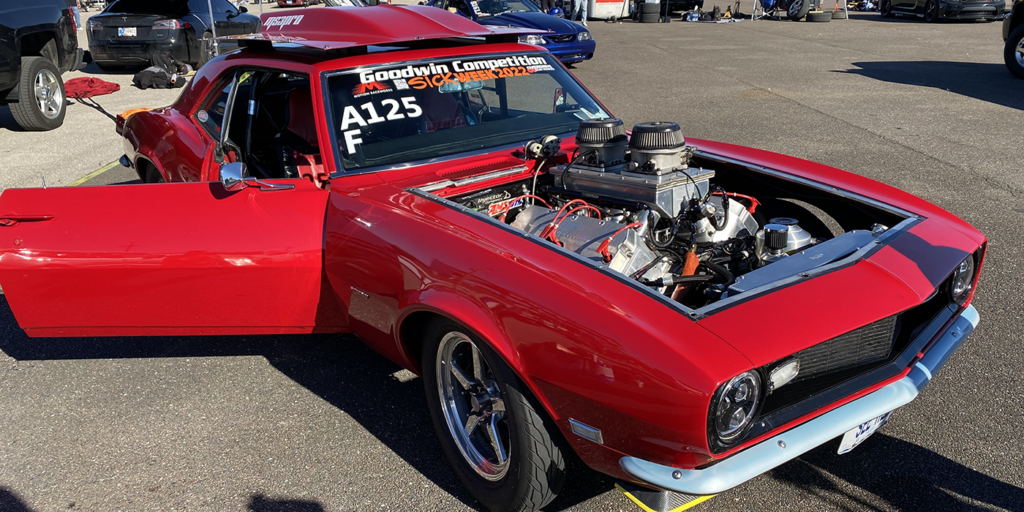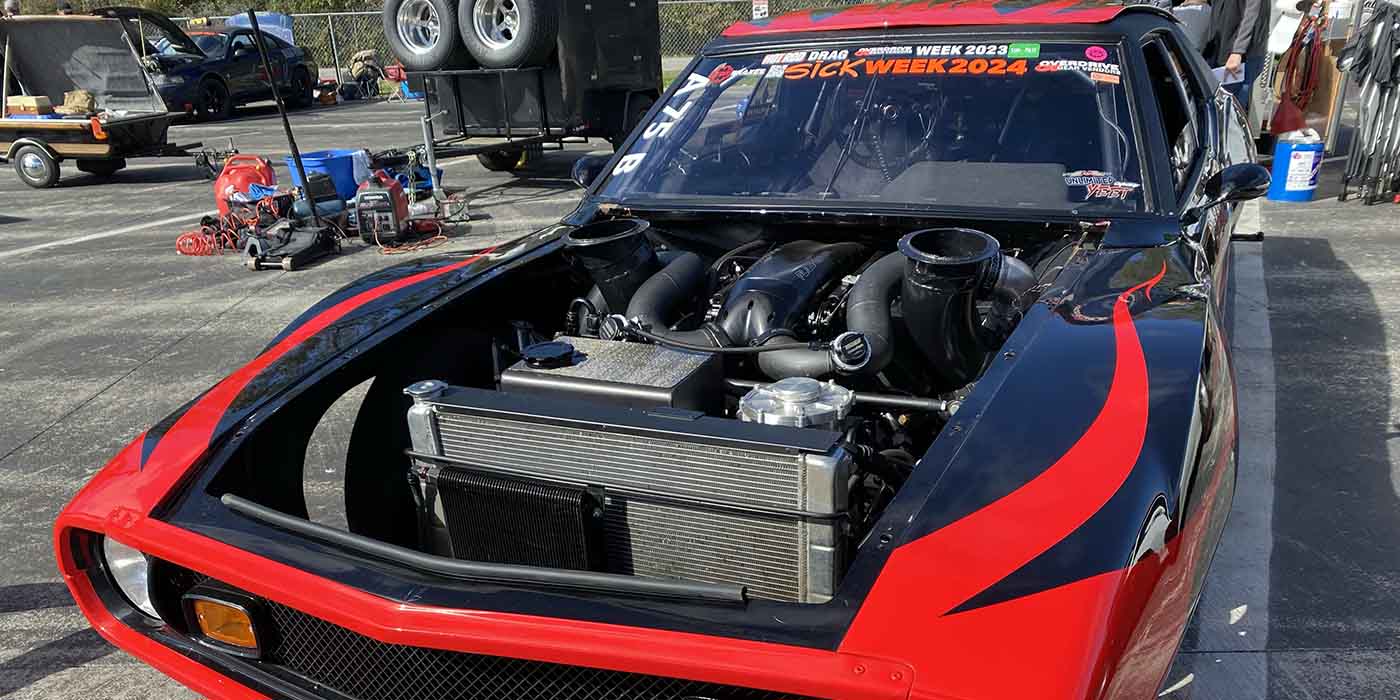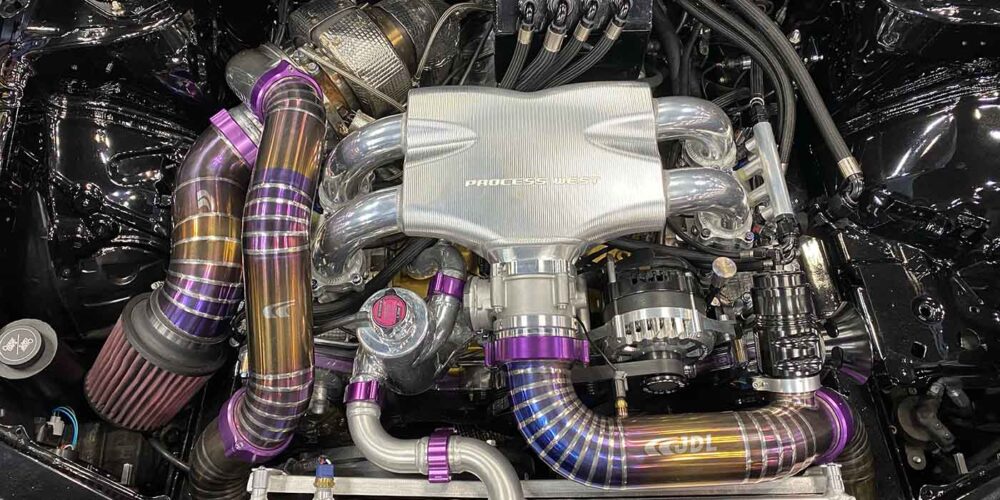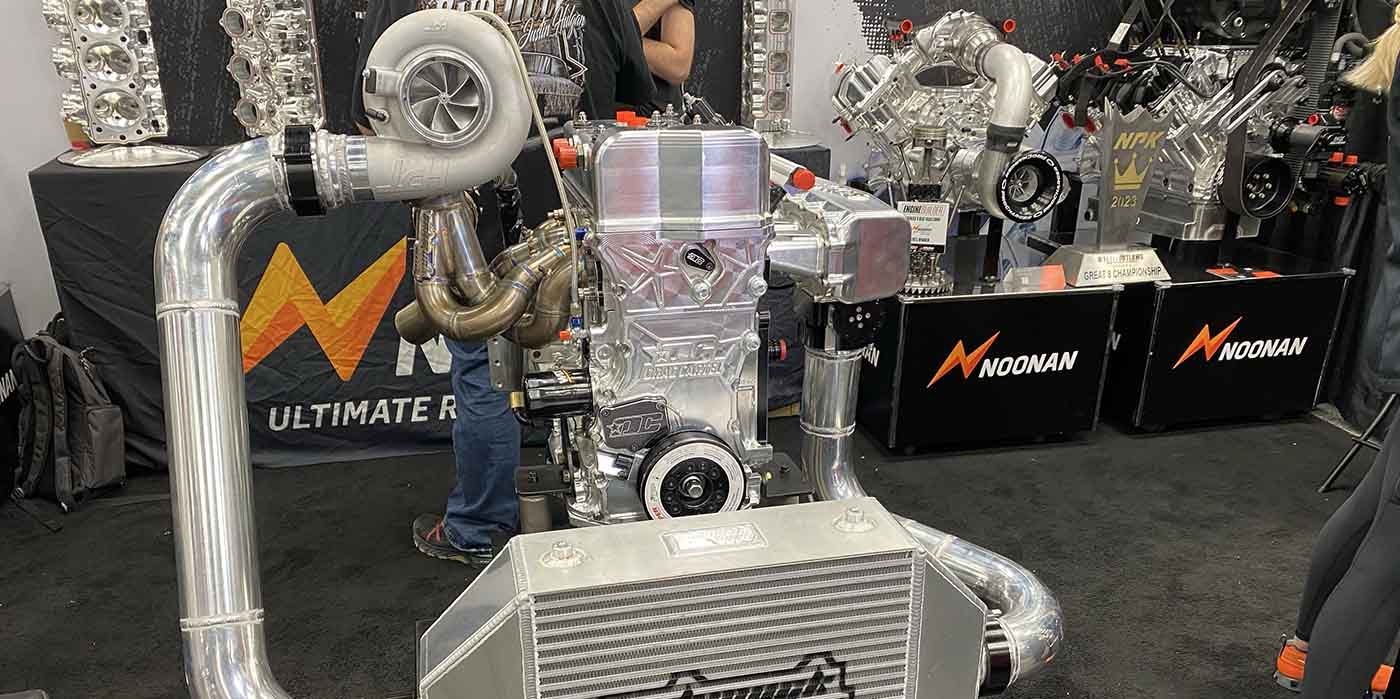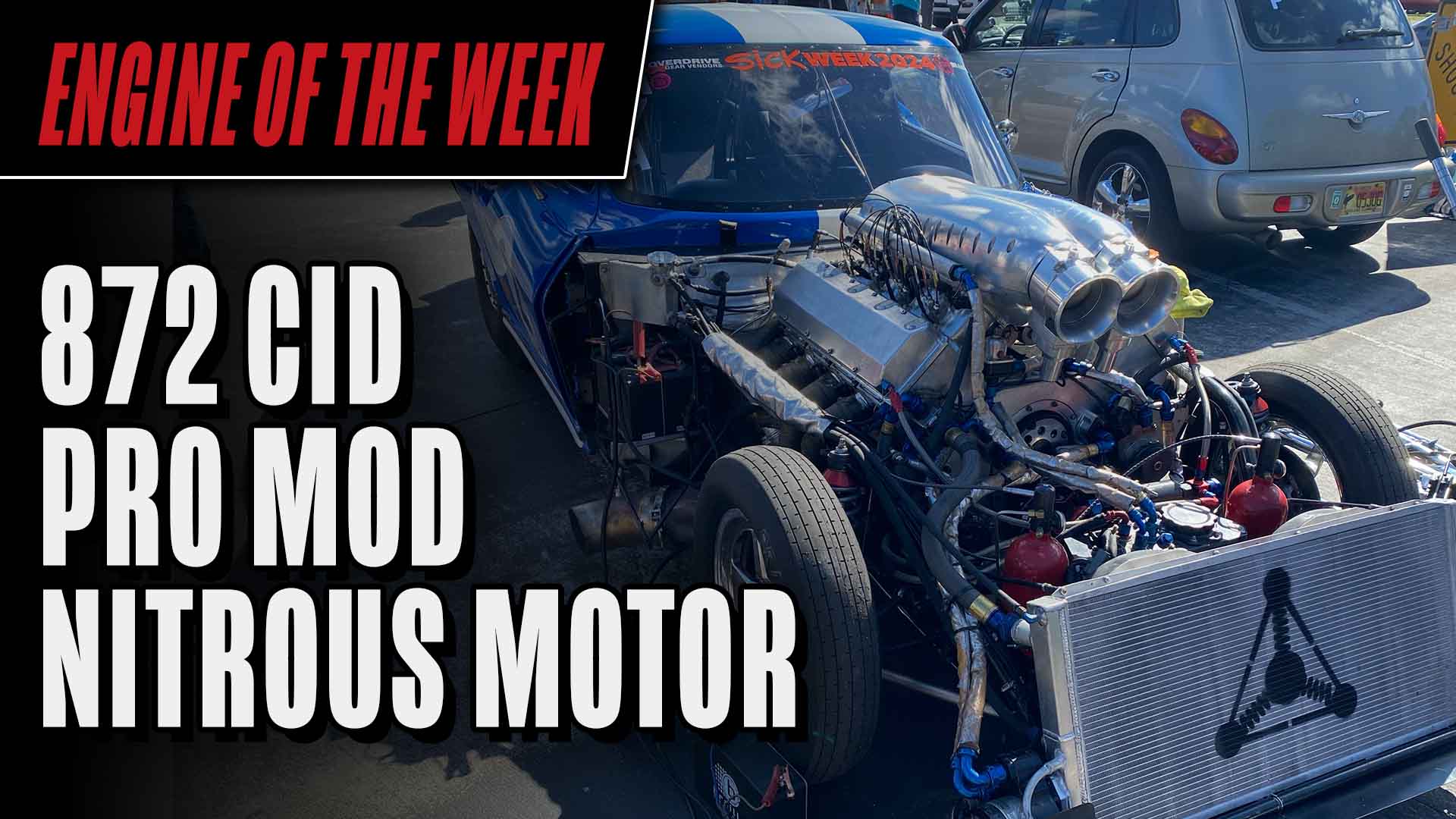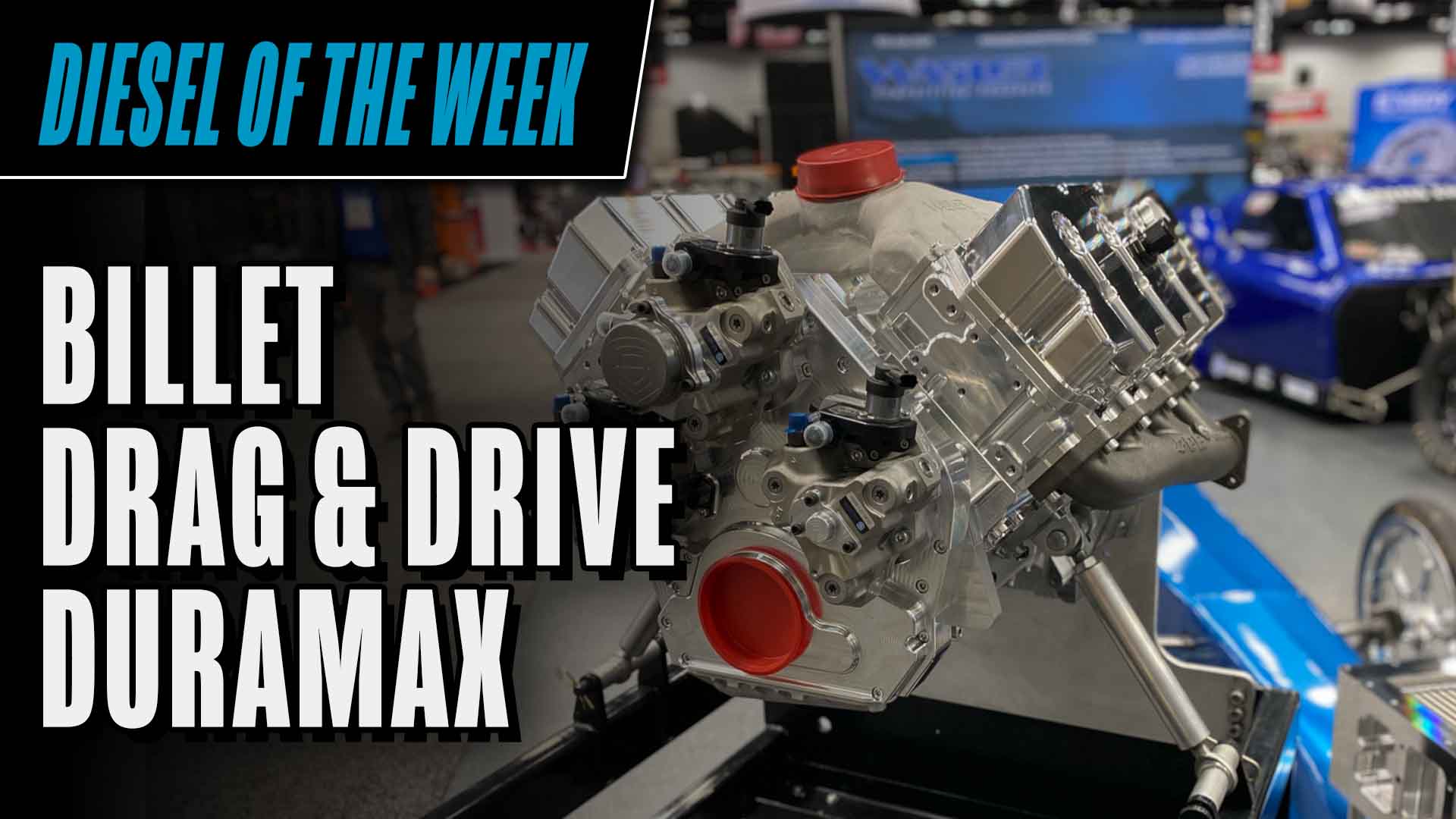Engine of the Week is presented by



Continuing our Sick Week recap of awesome engines seen during the Florida drag-and-drive event, this week we cover the ins and outs of James “Doc” McEntire’s Goodwin Competition-built, 709 cubic inch Hemi engine.
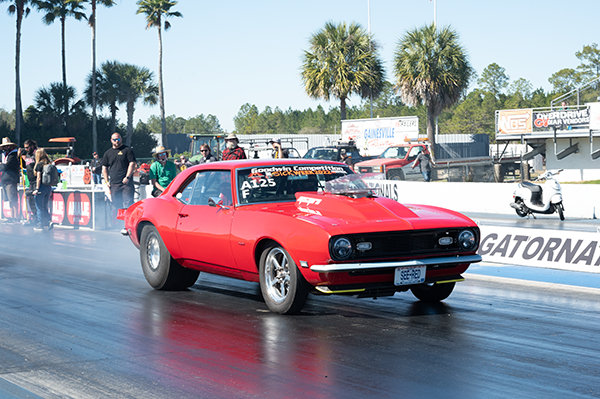
We obviously noticed James’ 1968 “See Red” Camaro right from the start of the event, as it’s a gorgeous car and an even more awesome engine, but it wasn’t until day three in Gainesville, FL at Gainesville Raceway that we got the opportunity to speak with James about his setup. Running in the Naturally Aspirated class, James’ engine is a bit more unique when it comes to drag-and-drive horsepower.
“This is a naturally aspirated car in a power-adder world,” McEntire quipped. “We are excited to be as competitive as we are.”
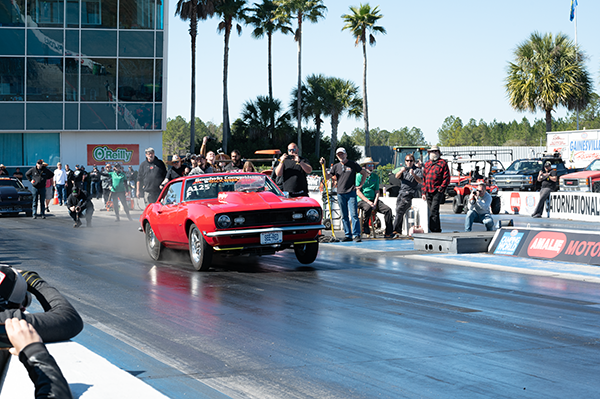
That level of competitiveness is due to Doc’s long-time involvement in drag-and-drive, but also because of Goodwin Competition’s all-billet Hemi-based engine. Goodwin Competition, owned by engine builder Todd Goodwin, is located in Ormo, WI. The shop started more than 30 years ago, and today, builds race engines for a number of applications. The crown jewel, however, is the shop’s custom Semi Hemi engine, which can be built from 650 cid to 820 cid.
“We make the engine completely out of billet aluminum,” Todd Goodwin told us a few years back. “The blocks, heads and most of the accessories are made out of billet aluminum so it’s kind of exciting to build something a little bit different than what everybody else is doing.”
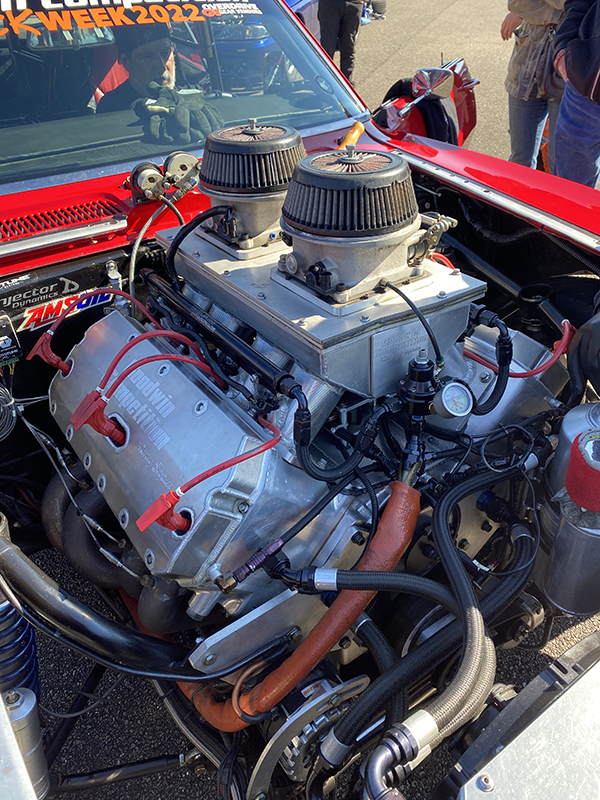
Being a little bit different is exactly what Doc was looking for as he ramped up his drag-and-drive involvement and came to Goodwin Competition nearly 10 years ago for one of their Semi Hemi engine builds.
“Todd Goodwin is a great engine builder and he’s done good work for us,” McEntire says. “Our engine features an all-billet, 5.000” bore space block. It has a 5.000” stroke and a 4.750” bore, and it displaces 709 cubic inches. It’s super durable. It’s something that Todd Goodwin came up with and proposed to me back in 2013 and we had our maiden voyage in 2015 and proceeded to break multiple transmissions from there – it makes good power!”
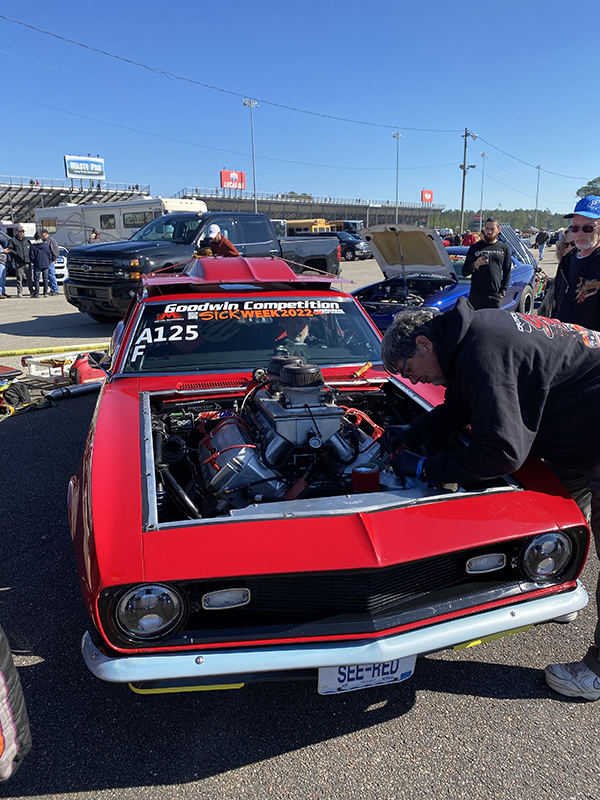
Inside the block spins a billet steel crankshaft equipped with billet connecting rods, custom CP or Diamond pistons with tool steel tapered wall pins, and custom Total Seal piston rings.
Of course, if you know or have spoken with either Doc or Todd, then you know durability is important to both of them. As Doc walked us through the engine build, that was abundantly clear.
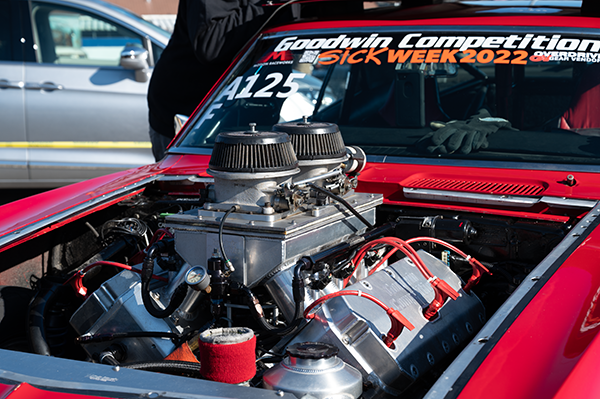
“Durability is the most important thing,” McEntire says. “For instance, the camshaft has nine roller cam bearings supporting it. The camshaft specs are held in a vault in Fort Knox, so I can’t give you any of that stuff.”
What we do know about the cam is it’s a 70mm custom spec’d cam, typically from either Howard’s or COMP. It sits in an enclosed cam tunnel and rolls on DLC keyed lifters from Jesel. The engine’s valvetrain also features Victory titanium valves and titanium retainers, PSI springs, Jesel or WW Engineering shaft-mounted rockers with needle bearing roller tips and custom rocker stands, Manton heat-treated pushrods with alloy tips, and a Jesel belt drive helps keep things running right.
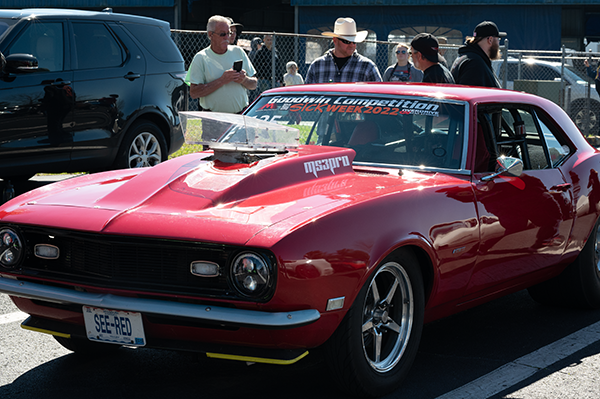
Those valvetrain components sit inside some enormous, billet, CNC-ported cylinder heads, which Doc told us are water jacketed and reverse flow fed, so the water goes in through the block and out through the heads to remain fully cooled.
“It’s essentially a Hemi-style cylinder head, but the combustion chamber is a flat chamber,” he says. “It’s not like a typical Hemi-style cavity. It was designed with the valvetrain geometry in mind, so there’s zero deflection. Everything is as straight and true as you can make it to eliminate a lot of stress on the valvetrain because on large lift, naturally aspirated camshafts, the cars always fail in the valvetrain.”
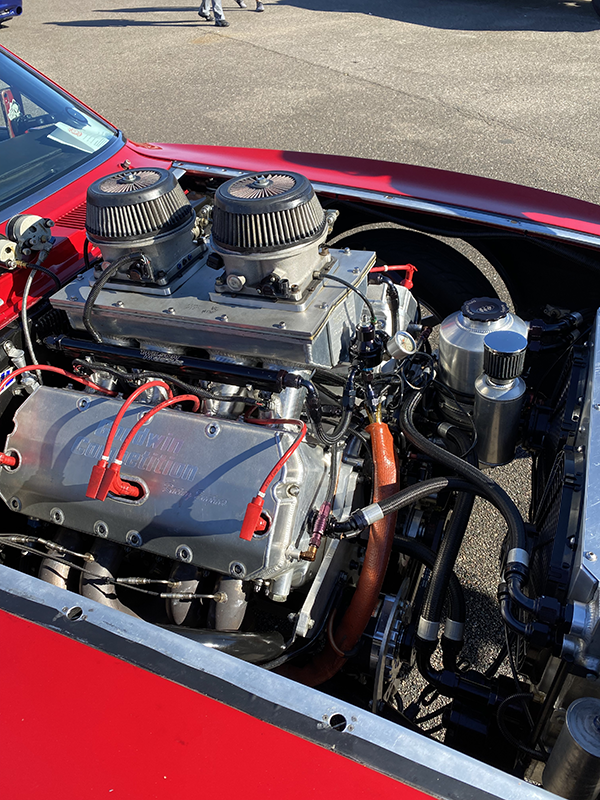
Moving from the top of the engine to the bottom, Doc told us the engine features a Dailey Engineering 5-stage dry sump oiling system with an external oil pump, which helps keep those valvetrain failures from occurring.
“I’m running a dry sump oiling system with an external oil pump drive that creates crankcase vacuum and oil for the engine,” he says. “We run a 5w50 oil, and we have had really good luck with way the oiling system cools the valvetrain. There’s actually dams built in the cylinder head that pools oil, so the valve springs are literally bathing in oil continuously. It’s a really unique design for the endurance-style drag-and-drive stuff that we do.”
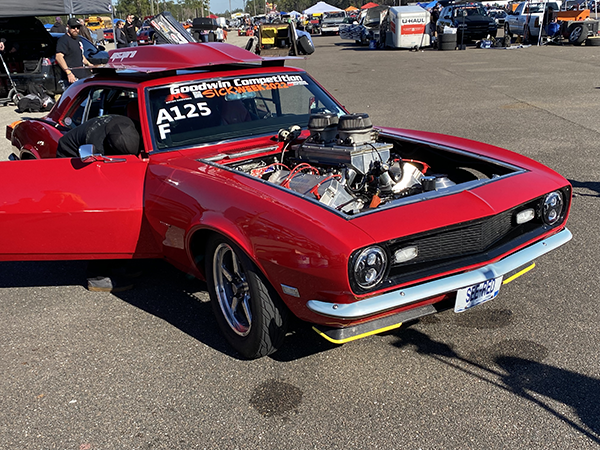
McEntire’s billet Hemi also features a lightweight billet sheet metal intake manifold with linkage and two GC/Pro Systems 4-barrel Dominator carburetors. Unlike many other competitors who might get asked how much boost they run, McEntire doesn’t have to answer those kinds of inquiries. Rather, people often ask how much compression ratio he runs.
“People ask us all the time, how much compression ratio we run,” he says. “I tell them, ‘If I tell you you’re not going to believe me.’ It’s in excess of 15:1 and we run it on pump gas on our street drives. When we make any runs at full throttle, we put good fuel in it because of the cylinder pressure that the camshaft design creates. This motor’s cylinder efficiency really improves as it increases engine speed. It’s got a 6,500-rpm stall converter in it, so putzing around on the street, it doesn’t build any cylinder pressure.”
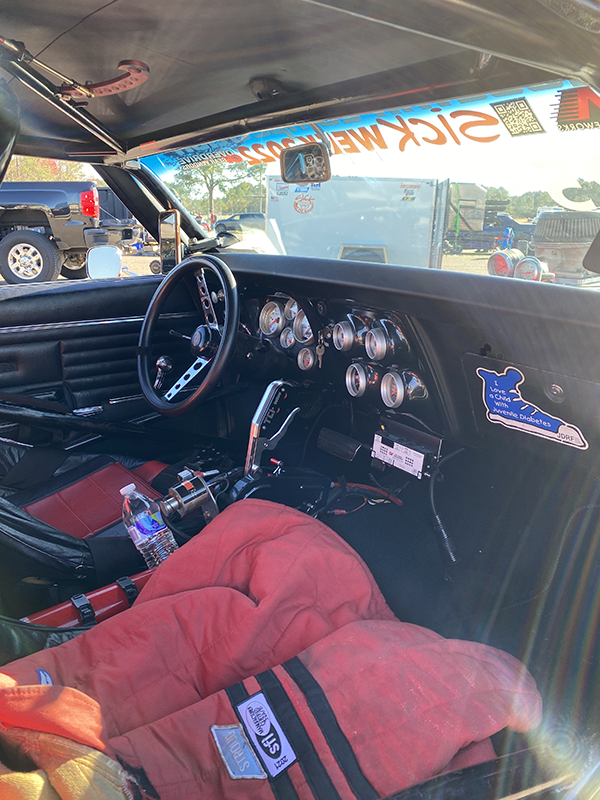
To help James manage this massive engine and its horsepower, he relies on an MS3Pro ECU from DIYAutoTune / Hoffman Innovations Network, which allows him to manipulate the engine in many, many ways.
“We’ve had really good luck and good support from Jerry Hoffman and all of his technical support staff,” McEntire says. “I’ve got a good friend of mine from years back who rides with me named Jeff McConnel who does most of the tuning. As we drive down the road, we can change things like fueling and spark timing to optimize fuel economy on the street.”
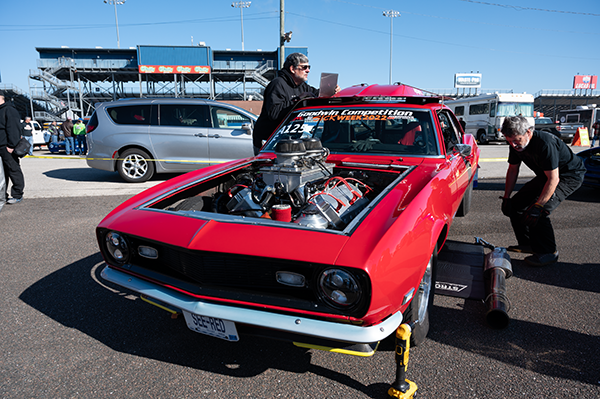
If you’re curious how much horsepower 700+ cubic inches gets you, Doc says the engine has not been on a dyno to get an exact number.
“People ask us that all the time,” he says. “This engine, unfortunately, has never been on a chassis or an engine dyno. We estimate that it makes somewhere between 1,200-1,300 horsepower. We had a smaller version of this engine when we first put it on the street and it was over 1,200 horse. With this one, we went up to the bigger crankshaft, so I’m assuming it’s somewhere in that neighborhood. The track is the best dyno.”
During Sick Week 2022, Doc ran with the A group competitors (faster than 8.49 in the 1/4 mile) and competed in the NA class.
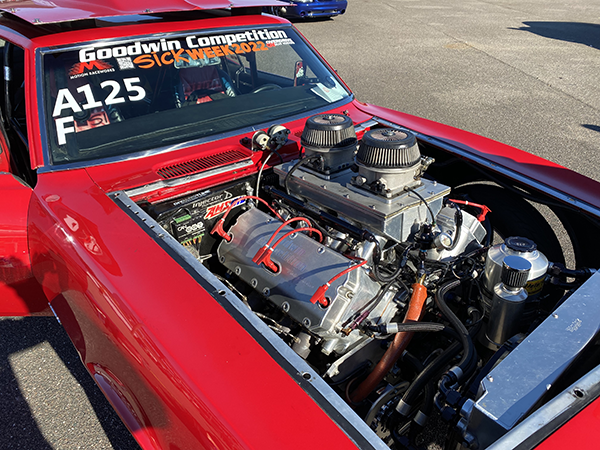
“This car holds the world record for the quickest and fastest naturally aspirated street car and we set that in 2019 at 7.89@170 mph,” McEntire says. “Our goal this week is to reset that record. We’ve been struggling with some gremlins electronically in the car. We’re looking forward to South Georgia Motorsports Park where we know that track surface is going to be glued in and this car is going to reset the record.”
Across four days of racing, Doc’s “See Red” Camaro went [email protected] at Bradenton Motorsports Park, [email protected] at Gainesville Raceway, [email protected] at South Georgia Motorsports Park, and [email protected] on the final day back at Bradenton for an [email protected] average. Those ETs got McEntire the NA class win at Sick Week and he reset his NA street car record at SGMP.
We’ll be looking forward to seeing more of Doc’s drag-and-drive performances later this year!
Engine of the Week is sponsored by PennGrade Motor Oil, Elring – Das Original, Scat Crankshafts and Engine & Performance Warehouse Inc./NPW Companies. If you have an engine you’d like to highlight in this series, please email Engine Builder Editor Greg Jones at [email protected].

